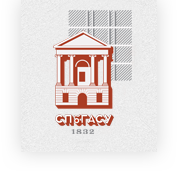A Semiotic Perspective on Urban Brand Image Design: The Case of Macao
DOI:
https://doi.org/10.63313/ah.9025Keywords:
Semiotics, cultural symbols, semiotic analysis, urban branding, MacaoAbstract
As an international hub for tourism and leisure, Macao possesses significant potential for urban brand reconstruction due to its unique Sino-Portuguese cultural elements and advantageous geographical position. Semiotic theory provides a fresh lens through which to revitalize urban brand images. By applying semiotic methods, this study deconstructs and reorganizes Macao’s urban symbols, extracting those deeply rooted in its cultural heritage to construct symbolic representations of the city’s brand identity. The objective is to employ semiotic approaches to explore the core system of urban symbols within Macao’s brand, and to propose corresponding strategies for brand image development. This research aims not only to offer services for urban brand construction, but also to build a perceptible and resonant brand image, thereby enhancing Macao’s global influence and competitiveness.
References
[1] Zhou Ping & Li Ze. (2019). “Reshaping Macao’s City Brand under the Belt and Road Ini-tiative.” Youth Journal (20), 89–90.
[2] Zhang Yaxin. (2023-07-10). “The First World City Branding Conference Was Held in Ma-cao.” China City News, 021.
[3] Wang Xuejiao. (2024). “Research on a Pictorial Cross-Cultural Inclusive Design Model Based on Peirce’s Semiotics.” Packaging Engineering (22), 259–265+370.
[4] Quan Xinxin. (2024). “Research on City Brand Image Design from the Perspective of Se-miotics.” Beauty and Times (City Edition) (04), 114–116.
[5] Xin Lujuan. (2024). “Research on City Brand SOR Aesthetic Design Based on Mul-ti-Channel Information Perception.” Packaging Engineering (20), 491–499.
[6] Yao Chong. (2024). “Research on the Shaping and Communication of City Brand Image.” News Culture Construction (17), 35–37.
[7] Anholt, S. (2010). Places: Identity, image and reputation. Palgrave Macmillan.
[8] Ashworth, G. J., & Voogd, H. (1990). Selling the city: Marketing approaches in public sector urban planning. Belhaven Press.
[9] Barthes, R. (1967). Elements of semiology. Hill and Wang.
[10] Chandler, D. (2007). Semiotics: The basics. Routledge.
[11] Dinnie, K. (2011). City branding: Theory and cases. Palgrave Macmillan.
[12] Eco, U. (1976). A theory of semiotics. Indiana University Press.
[13] Hankinson, G. (2001). Location branding: A study of the branding practices of 12 English cities. Journal of Brand Management, 9(2), 127–142.
[14] Kavaratzis, M. (2004). From city marketing to city branding: Towards a theoretical framework for developing city brands. Place Branding, 1(1), 58–73.
[15] Kavaratzis, M., & Ashworth, G. J. (2005). City branding: An effective assertion of identity or a transitory marketing trick? Place Branding, 2(3), 183–194.
[16] Peirce, C. S. (1931). Collected papers of Charles Sanders Peirce (Vol. I-VI). Harvard Univer-sity Press.
[17] Saussure, F. de. (1983). Course in general linguistics (R. Harris, Trans.). Open Court.
[18] Zenker, S., & Braun, E. (2010). Branding a city: A conceptual approach for place branding and place brand management. Place Branding and Public Diplomacy, 6(1), 6Anholt, S. (2010). Places: Identity, image and reputation. Palgrave Macmillan.
[19] Ashworth, G. J., & Voogd, H. (1990). Selling the city: Marketing approaches in public sector urban planning. Belhaven Press.
[20] Chandler, D. (2007). Semiotics: The basics. Routledge.
[21] Dinnie, K. (2011). City branding: Theory and cases. Palgrave Macmillan.
[22] Hankinson, G. (2001). Location branding: A study of the branding practices of 12 English cities. Journal of Brand Management, 9(2), 127–142.
[23] Kavaratzis, M. (2004). From city marketing to city branding: Towards a theoretical framework for developing city brands. Place Branding, 1(1), 58–73.
[24] Kavaratzis, M., & Ashworth, G. J. (2005). City branding: An effective assertion of identity or a transitory marketing trick? Place Branding, 2(3), 183–194.
[25] Zenker, S., & Braun, E. (2010). Branding a city: A conceptual approach for place branding and place brand management. Place Branding and Public Diplomacy, 6(1), 64–73.4–73.
Downloads
Published
Issue
Section
License
Copyright (c) 2025 by author(s) and Erytis Publishing Limited.

This work is licensed under a Creative Commons Attribution-ShareAlike 4.0 International License.















